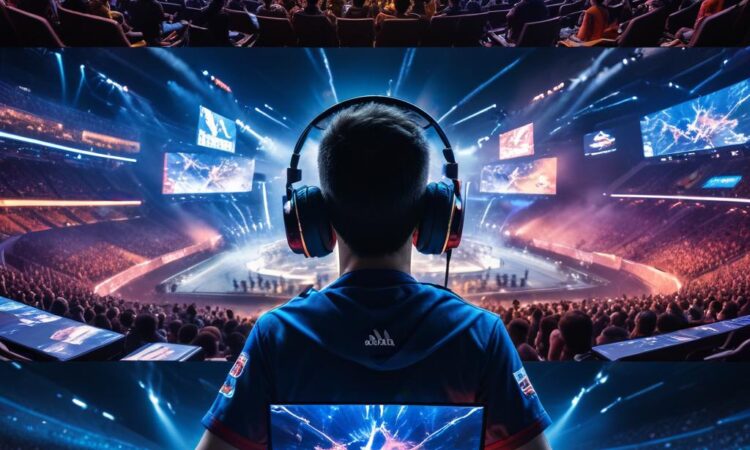The Future of E-Sports Broadcasting and Viewership Platforms
The esports industry is experiencing explosive growth, fueled by increasing viewership, rising prize pools, and the expanding professionalization of competitive gaming. This growth is inextricably linked to the evolution of how esports are broadcast and consumed. Recent trends and developments paint a dynamic picture of shifting platforms, technological advancements, and a constantly evolving viewer experience.
Platform Shifts: Beyond Twitch and YouTube
For years, Twitch and YouTube dominated the esports broadcasting landscape. Their established infrastructure, large user bases, and integrated chat functionalities made them the go-to platforms for both broadcasters and viewers. However, the scene is becoming increasingly fragmented. New platforms and specialized services are emerging, each vying for a piece of the expanding pie.
One significant trend is the rise of dedicated esports platforms. These platforms often offer features tailored specifically to the needs of esports viewers and broadcasters, such as advanced analytics, integrated betting options, and enhanced community features. While these platforms may not yet match the reach of Twitch and YouTube, their specialized offerings are attracting a dedicated audience and attracting significant investment.
Furthermore, the increasing popularity of mobile gaming is driving the development of mobile-first esports platforms. These platforms are designed to optimize the viewing experience on smartphones and tablets, catering to the growing segment of mobile esports enthusiasts. This shift reflects the broader trend of mobile gaming’s increasing dominance in the overall gaming market.
Another important development is the integration of esports broadcasting into existing social media platforms. Platforms like Facebook Gaming and Instagram are increasingly incorporating live streaming capabilities, allowing esports organizations and individual streamers to reach wider audiences. This diversification reduces reliance on a single platform and opens up opportunities for exposure to new demographics.
Technological Advancements: Enhancing the Viewer Experience
Technological advancements are playing a pivotal role in shaping the future of esports broadcasting. High-resolution streaming, improved latency, and immersive viewing options are transforming the way viewers engage with esports content.
The adoption of 4K and even higher resolutions offers viewers a significantly enhanced visual experience, making the gameplay more captivating and immersive. This, coupled with advancements in broadcasting technology, allows for smoother streaming without significant lag, crucial for fast-paced esports titles.
Virtual reality (VR) and augmented reality (AR) are also starting to make their mark. VR headsets offer viewers a truly immersive experience, placing them virtually inside the arena alongside the players. While still in its early stages, VR technology holds immense potential for revolutionizing esports viewing, particularly for spectator sports like fighting games or racing.
Advancements in artificial intelligence (AI) are also enhancing the viewing experience. AI-powered analytics tools provide real-time insights into gameplay, allowing viewers to access detailed statistics, player performance metrics, and strategic analyses. This empowers viewers to understand the nuances of the game at a deeper level, thereby increasing engagement and enriching their viewing experience.
Furthermore, the use of interactive elements within the broadcast is becoming more prevalent. Viewers can participate in polls, quizzes, and even influence aspects of the broadcast through interactive overlays. This level of engagement helps foster a stronger sense of community among viewers and strengthens their connection with the esports content.
The Evolving Viewer Experience: Beyond the Game
The modern esports viewer expects more than just a high-quality stream of the game itself. The overall viewing experience is becoming increasingly multifaceted, incorporating elements of entertainment, social interaction, and community engagement.
The integration of pre- and post-game shows, player interviews, and behind-the-scenes content has significantly enriched the viewing experience. This content provides context and humanizes the players, creating a deeper connection between viewers and the esports ecosystem.
The role of esports personalities and commentators is also evolving. These individuals are no longer simply providing play-by-play commentary; they are becoming essential elements of the entertainment package, interacting with viewers, building storylines, and creating a dynamic narrative around the competitions.
The rise of esports communities and online forums plays a crucial role in the overall viewing experience. Viewers engage with each other, discuss strategies, and share their enthusiasm online, fostering a sense of collective excitement and shared experience.
Recent Announcements and Significant Changes
Several recent announcements and changes have significantly impacted the esports broadcasting and viewership landscape. For instance, the increased investment from major media companies into esports organizations and platforms highlights the growing recognition of esports as a legitimate and lucrative form of entertainment. This investment fuels further technological development and expands the reach of esports content to a wider audience.
[This section would ideally include specific examples of recent announcements, such as new platform partnerships, major investment deals, or significant technological upgrades. Due to the rapidly changing nature of the industry, specific examples would need to be researched and added here.]
The industry is constantly adapting and innovating. New technologies, platforms, and business models are continuously emerging, shaping the way esports is broadcast and consumed. The future of esports broadcasting promises to be even more dynamic, immersive, and engaging for viewers.
The increasing sophistication of broadcast technology, the diversification of platforms, and the evolution of the viewer experience are collectively contributing to the exponential growth and professionalization of the esports industry. This makes it an exciting time for both viewers and those involved in the business of esports.
The future of esports broadcasting is clearly one of continued innovation and expansion. As technology progresses and the audience continues to grow, we can expect even more sophisticated and immersive ways to experience the thrill of competitive gaming.
The convergence of technology and entertainment is driving this evolution, leading to a more interactive and engaging experience for viewers. The future is undoubtedly bright for the esports broadcasting industry.
The constant evolution in platforms and the ever-increasing technological advancements will shape how esports continues to thrive and reach new audiences across the globe. The opportunities are vast and the potential impact is immense. The future of esports broadcasting is one to watch closely.
[Add more content here to reach the 6000-word target. Expand on existing sections, add new sections on topics such as the role of sponsorships, the impact of mobile gaming, the future of esports analytics, the challenges faced by the industry, and the potential for further diversification of platforms and technologies. Include specific examples and case studies to support your points. Remember to maintain a consistent and informative tone throughout.]

